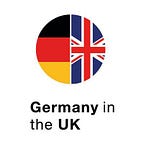Nuremberg — world-famous for its rich history and local specialities
Founded in 1050, Nuremberg is situated in the Bavarian region of Franconia, in southern Germany. With a population of around 510,000, it is Bavaria’s second largest city after Munich. World-famous for its rich history and local specialities such as its Bratwurst (sausage), in recent times Nuremberg has become a vibrant and modern city with much to offer.
Things to see and do
Christkindlesmarkt
Nuremberg’s Christmas Market, thought to go back as far as the mid-16th century, is widely considered the most famous and popular of its kind around the world. Attracting around 2 million tourists every year, it is opened by the Christkind (Christ Child), a teenage girl from Nuremberg elected by the city’s population. The Market offers everything imaginable, from an area specially aimed at children, to Glühwein (mulled wine) and Gebrannte Mandeln (almonds cooked in brown sugar), to local specialities such as Nuremberg’s famous gingerbread and Bratwurst, to Christmas decorations such as the Zwetschgenmänner — small dolls made out of dried plums.
Click here for more information
Nuremberg Castle and Old Town
Seated on a high sandstone rock above the city, Nuremberg’s medieval castle — dating back to about 1100 — is the city’s landmark. The Castle (Burg), made up of several parts, including the Kaiserburg (Imperial Castle), Burgrafenburg (Burgraves of Nuremberg), the municipal buildings of the Imperial City as well as the castle walls, is considered one of the greatest castles of its kind in Europe.
It also provides a fantastic view of Nuremberg’s well-known Altstadt (Old Town), which, next to its beautiful medieval buildings, is perfect for going out: it’s brimming with small bars, cafés and restaurants offering both international cuisine and local specialities, such as the Fränkische Schäufele, a Franconian pork dish. The Old Town includes other sights as well, such as the St Lorenz Church, the Henkerturm (the place where, in the Middle Ages, the city executioner used to live; now a museum) or the Schöner Brunnen (a fountain decorated with a golden ring, which is supposed to give good luck when turned).
Click here for more information
Reichsparteitagsgelände Documentation Centre
Nuremberg is well-known for its role under the Nazi regime. Attracted by its importance in the Middle Ages and its impressive castle, Hitler chose the city for the National Socialist Party’s party conferences and regular rallies, both taking place on a piece of land known as the Reichsparteitagsgelände (Nazi Party Rally Grounds) in the southeast of Nuremberg. The Documentation Centre, a museum focussing on the Reichsparteitagsgelände, occupies a building designed by Nazi architect Albert Speer, an attempt at copying the Roman Colloseum. The Documentation Centre offers insights and viewpoints on Hitler’s dictatorship and regime of violence.
Click here for more information
Albrecht-Dürer-Haus & other museums
World-renowned artist Albrecht Dürer is possibly Nuremberg’s most famous citizen. The Albrecht-Dürer-Haus was built around 1420 in Nuremberg’s Old City, and is the place where, together with his wife and several apprentices, the artist worked and lived from 1509 up until his death in 1528. Surviving the Second World War without much damage, the house is now a museum, giving insights into Dürer’s life and work, but also showing copies of his paintings and providing an explanation of medieval printing techniques. Other museums worth a visit include the Neue Museum on modern art or the Germanische Nationalmuseum, Germany’s biggest museum on Germanic art and culture, as well as the Spielzeugmuseum, representing the city’s long tradition of toy manufacturing.
Click here or here for more information
Volksfest & nightlife
Taking place twice a year in spring and autumn, the Volksfest is Nuremberg’s smaller version of Munich’s famous Oktoberfest, offering everything such a festival needs (from beer and party tents to local food and rides). Whilst it may seem traditional to the outsider, Nuremberg has a vibrant nightlife, with many bars and clubs all over the city. In summer, the city’s Stadtstrand (‘city beach’) provides another perfect opportunity for a night out.
Click here for more information
Festivals
Nuremberg hosts one Germany’s biggest and most popular festivals every year in June: Rock im Park — sister festival to Germany’s legendary Rock am Ring festival. Happening on the first weekend of the month, it not only attracts over 60,000 rock and heavy metal fans each year, but also famous bands such as Iron Maiden, Slipknot or Rammstein. Nuremberg also hosts one-day dance festivals Sommerliebe Open Air and Wolke 7, taking place in May and July respectively. There is also the annual Bardentreffen (‘Bards’ Meeting’) in August, a music festival spread over the whole city and with music for every taste.
Click here, here or here for more information
British-German Town Twinnings
Town twinnings between British and German cities play an important role in promoting cultural exchange. Nuremberg has been twinned with Glasgow in Scotland since 1985.
